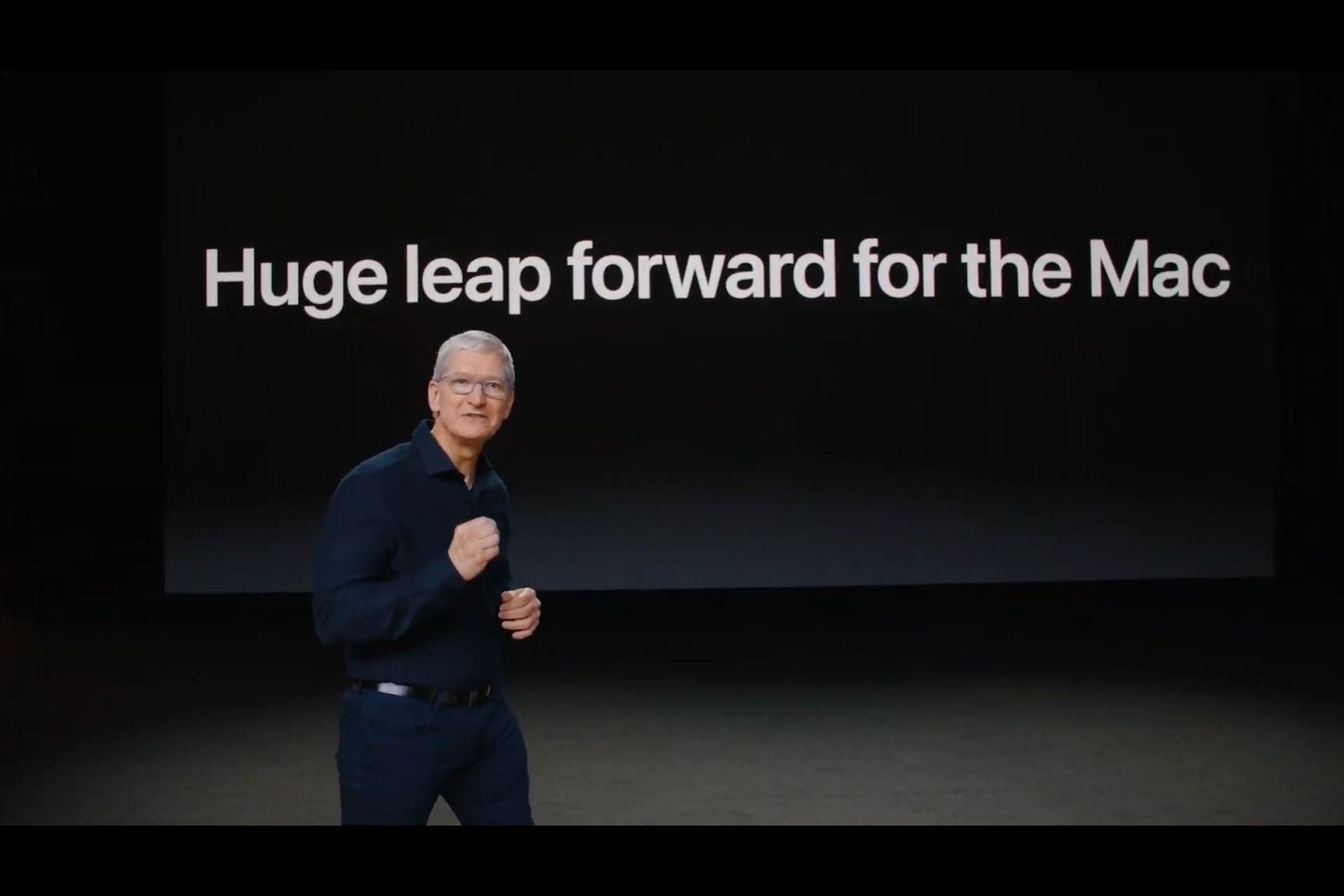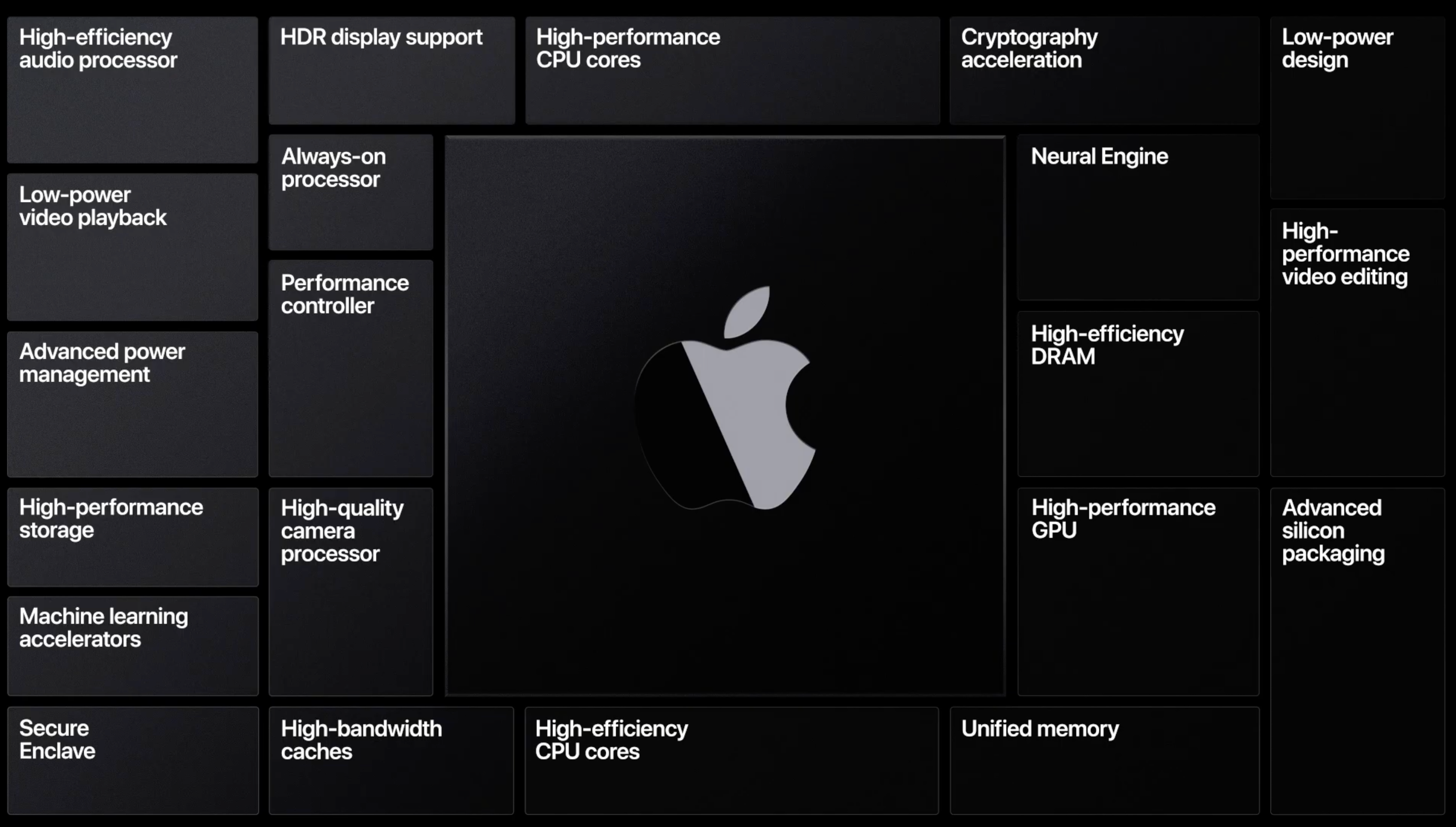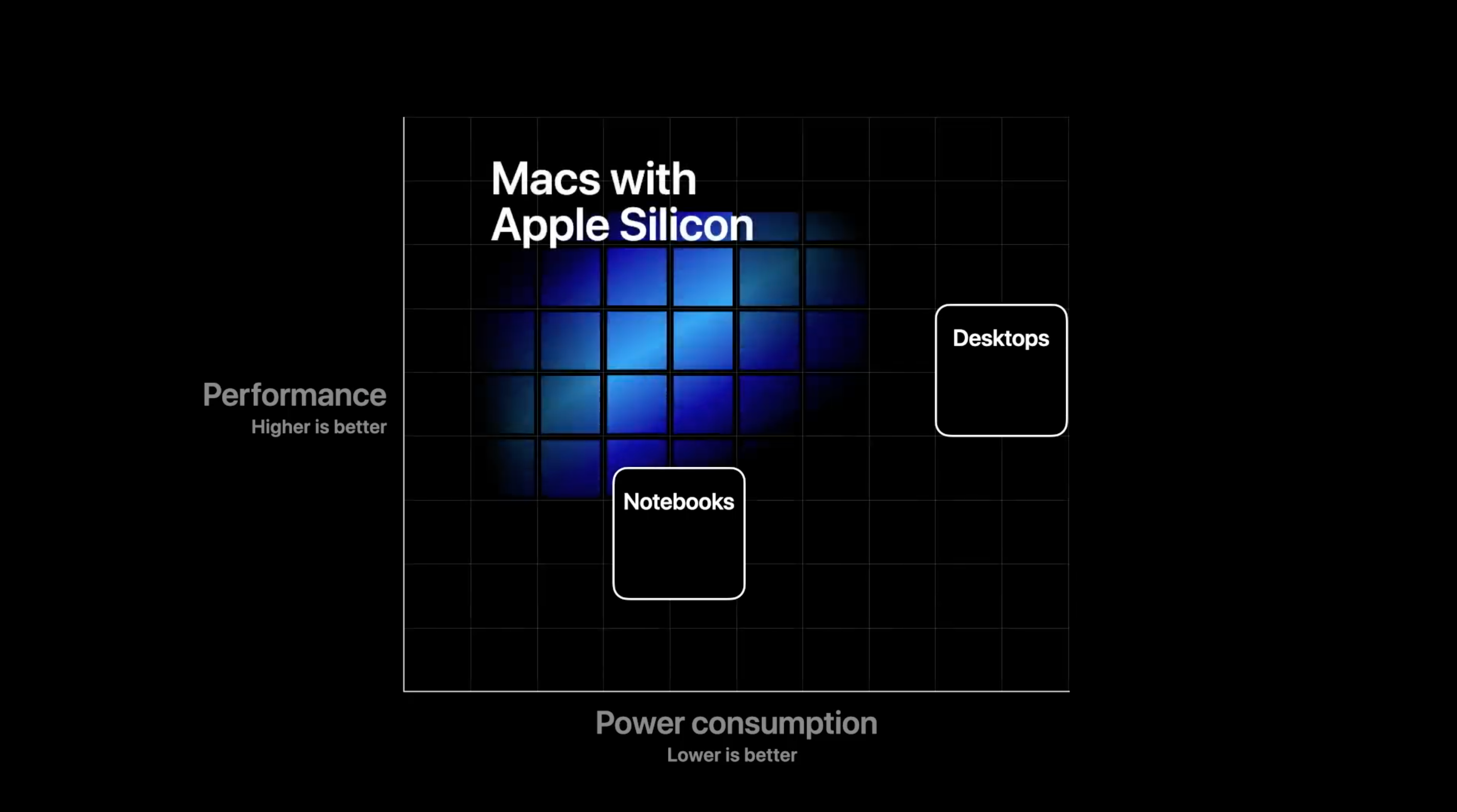"When we make bold changes, it's for one simple reason - so we can make better products". That's what Apple CEO Tim Cook said as he introduced Apple Silicon, Apple's effort to create its own processors for the Mac alongside its own chips for the iPhone and iPad.
The first Mac running on the new hardware will be with us by the end of 2020 - we'd have thought it will be in the MacBook Air class. These new chips will all be based on ARM designs just as the chips inside the iPad and iPhone are.
There will be a two-year transition to Macs running the new chips, but crucially some Intel Macs will still be available which could be seen as an admission that performance at the top end won't match Intel's chips.
The new macOS Big Sur is the first version to carry the macOS 11 name and has support for ARM-based chips on the Mac.
All of Apple's own apps are up-and-running as native ARM apps thanks to the new version of Xcode, they just need to be recompiled. Universal 2 is the name of the software binary that will work across ARM and Intel Macs while Rosetta 2 is the app that will ensure compatibility with older apps.
As you might expect, iPadOS and iOS apps will also work right on the Mac too (although they'll have to be recompiled).
Apple has been working with Microsoft (for Office) and Adobe (for Creative Cloud) on the transition and showed us Photoshop working on a system working on the existing A12Z Bionic chip.
Apple is talking about a "whole new level of performance" for the Mac with the transition as well as more innovation through custom technologies on the chip including security and graphics.



